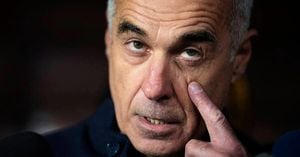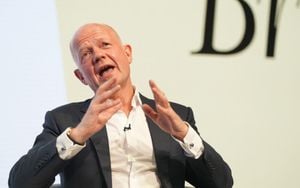Mumbai, known for its vibrant culture and fast-paced life, is also infamous for its chaotic traffic. The constant hustle and bustle, coupled with the city’s growth, has led to significant traffic jams and accidents. Recent debates surrounding traffic improvements and safety measures have shed light on the persistent hazards commuters face daily.
With an eye toward enhancing mobility, city officials have unveiled several initiatives aimed at streamlining traffic flow. Among these measures is the proposed expansion of key roads and junctions, which is expected to alleviate some of the congestion plaguing the city. The Mumbai Metropolitan Region Development Authority (MMRDA) is at the forefront of these plans, determining viable routes to minimize bottlenecks.
One of the most glaring issues with Mumbai's traffic system is the inadequacy of public transportation networks. While local trains and buses serve millions, they often operate beyond capacity, leading many residents to rely on personal vehicles. This reliance exacerbates congestion, as more cars on the road mean slower travel times for everyone. Authorities are now considering the introduction of more bus rapid transit systems, as well as encouraging carpooling and the use of non-motorized vehicles.
Further complicATING concerns are the hazardous conditions many roads present. Poorly maintained pavements, inadequate signage, and the absence of pedestrian crossings drastically increase risks for everyone involved. The government has announced plans to address these issues with road safety audits aimed at identifying and rectifying dangerous spots throughout the city.
“We need to prioritize pedestrian-friendly infrastructure,” states traffic expert Dr. Ramesh Mehta. “Simple enhancements such as improved crosswalks and bike lanes can positively influence the city’s safety and overall traffic management.” By focusing on improving conditions for pedestrians and cyclists, these initiatives aim to decrease vehicular dependency and promote sustainable commuting options.
Despite these promising plans, challenges remain formidable. Residents express skepticism about whether these improvements will yield timely results, especially with budget constraints and bureaucratic red tape. Many feel past initiatives have resulted more in temporary fixes than permanent solutions, leaving them wary of new promises.
The rise of ride-sharing apps and digital map services have also played roles affecting traffic patterns across Mumbai. While these modern conveniences provide handy solutions for many, they can also lead to increased congestion on already crowded roads. Young commuters, particularly, have embraced these platforms, sometimes leading to unintended urban gridlocks. Regulatory bodies are now contemplating restrictions on such services during peak hours to mitigate their impacts.
A recent survey conducted by the MMRDA revealed worrying statistics about the state of road safety. Approximately one-third of respondents indicated they had been involved in or had witnessed accidents on Mumbai roads within the past year. This statistic raises alarm bells and fuels the urgency for action on various fronts.
Environmental concerns also play a significant role as Mumbai strives to modernize its transportation system. Studies have confirmed higher pollution levels due to vehicular emissions, prompting local authorities to explore cleaner alternatives for transportation. Electric vehicles are gaining traction, assisted by governmental incentives and subsidies aimed at encouraging their adoption.
Looking forward, Mumbai’s quest for safer and more efficient traffic management continues to develop. Each step taken—from road expansions and infrastructural grants to policy discussions on public transport—paints a picture of hope. Yet, as implementation begins, residents remain cautiously optimistic, reminding everyone involved of the long road still to travel before they can enjoy the many benefits of these improvements.
This dynamic evolution of Mumbai’s transportation infrastructure holds promise but will require enduring commitment from both the authorities and the community. A collaborative effort to tackle existing issues is imperative to transition Mumbai from its traffic woes to becoming the city of dreams the public aspires to navigate freely and safely.



